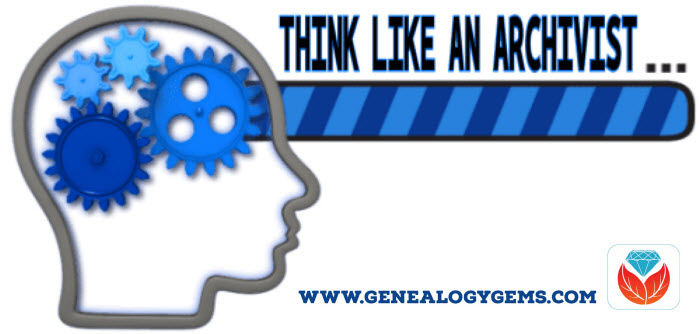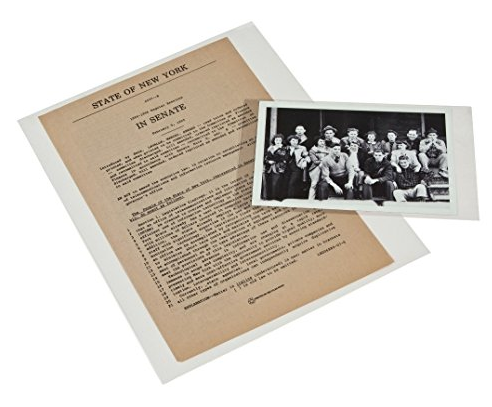Home Archiving for the Genealogist: 5 Ways to Think Like an Archivist
You may be doing some “home archiving” without even realizing it, if you’re the keeper of any family photos, documents, heirlooms, or artifacts. Professional archivist and genealogist Melissa Barker offers these tips for the family historian and keeper of the family archive.

I have always said that “home archiving” is something genealogists do, perhaps without ever calling it that. So family historians can definitely benefit from learning how archivists work. Here are five ways to think like an archivist.
5 Home Archiving Tips for Family Historians
 1. Learn to preserve family artifacts.
1. Learn to preserve family artifacts.
Archivists are always educating themselves on how to preserve certain items that have come to their archives. Genealogists inherit family heirlooms all the time. Learning how to preserve them is thinking like an archivist.
Tip: Preserving an item means keeping it from further deterioration. This may mean putting it in special storage materials, keeping it out of strong light, and storing it in a place that isn’t too hot, cold, or humid. Click here to read an article on humidity and your family archive.
 2. Organize your “collection.”
2. Organize your “collection.”
A very important job for archivists is keeping their records collections organized so they know what they have and can pull them efficiently. Genealogists, as home archivists, would also benefit from keeping their genealogical records organized.
Tip: Get inspired! Click here to catch some tips on organizing your digital photos from Denise Levenick, The Family Curator and author of How to Archive Family Keepsakes: Learn How to Preserve Family Photos, Memorabilia and Genealogy Records.
 3. Store your treasures carefully.
3. Store your treasures carefully.
Archivists are always careful to use special materials such as archival file folders and boxes to put records and artifacts into for preservation. Genealogists should use archival materials to preserve and store their records just like archivists do.
Tip: Click here to read my article on how to archive family history documents. It’s packed with great tips and recommended products to store your items safely.
4. Keep the stories that go with your artifacts.
 Telling the stories of the people that have come before us is also something that archivist try to do with the records they have in their care. Archivists do this by sharing their records collections with the public through displays, exhibits, and open houses. Genealogists should tell their ancestor’s stories by sharing their family histories with their families and passing down their ancestor’s stories to the next generation.
Telling the stories of the people that have come before us is also something that archivist try to do with the records they have in their care. Archivists do this by sharing their records collections with the public through displays, exhibits, and open houses. Genealogists should tell their ancestor’s stories by sharing their family histories with their families and passing down their ancestor’s stories to the next generation.
Tip: Create a meaningful display of artifacts in your own home. Group together items that tell a story, preferably unique, eye-catching items. Add framed copies of documents and photos (keep originals safely tucked away). Click here for some fantastic ideas from Lisa Louise Cooke on sharing your family history with the non-genealogists in your family.
5. Archive your own mementos.
Archivists collect today for tomorrow! Many archivists collect documents and artifacts that are produced today so they can be preserved for tomorrow. They collect items such as the high school graduation program, digitizing the local newspaper, and that local diner menu.
Genealogists do the same thing in their “home archiving” by collecting and preserving a funeral card, digital photographs they took at the grandbaby’s birthday, and the marriage invitation you received for your niece’s wedding.
 Home Archiving, National Archiving: It’s all in the Genealogy Gems Podcast
Home Archiving, National Archiving: It’s all in the Genealogy Gems Podcast
Did you know I’m on Lisa Louise Cooke’s Genealogy Gems Podcast now? I chime in frequently with that “offline” archival perspective that’s so important in our research. Click here to see the list of recent episodes. In Episode 211, publishing this week, I report on a fascinating way you can help make collections from the National Archives more accessible to everyone. Why not listen in? It’s free!
Disclosure: This article contains affiliate links and Genealogy Gems will be compensated if you make a purchase after clicking on these links (at no additional cost to you). Thank you for supporting Genealogy Gems!




